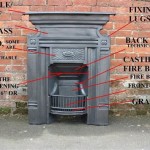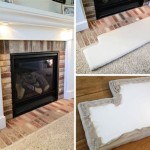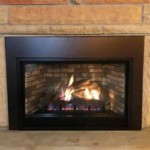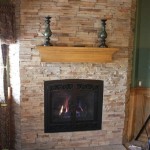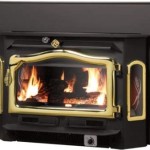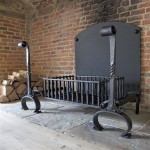Interior Fireplace Paint: A Comprehensive Guide
Fireplaces are a cherished focal point in many homes, adding warmth, ambiance, and a touch of rustic charm. However, over time, the paint on the fireplace surround can fade, chip, or become discolored. Repainting your interior fireplace can revitalize the space and create a fresh, updated look. Choosing the right paint for your fireplace is crucial, as it must withstand the high temperatures and soot exposure associated with a working fireplace. This guide provides a comprehensive overview of interior fireplace paint, covering its different types, key considerations, and application tips.
Types of Interior Fireplace Paint
Not all paints are created equal, and fireplace paints require special properties to withstand the unique demands of this application. Here are the primary types of interior fireplace paint available:
- High-Heat Paint: Designed for surfaces that experience high temperatures, such as fireplace surrounds, stove pipes, and chimneys. This type of paint typically uses ceramic or silicone resins to provide excellent heat resistance and durability. It is often available in a variety of matte, semi-gloss, and gloss finishes.
- Fireplace Enamel: A durable and heat-resistant paint specifically formulated for fireplace applications. It provides a smooth, glossy finish that resists chipping, fading, and staining. Fireplace enamels are often available in a wide range of colors, including metallic finishes.
- Ceramic Paint: A type of high-heat paint that forms a hard, ceramic-like coating on the surface. Ceramic paints are highly resistant to heat, chemicals, and abrasion, making them ideal for fireplaces. They typically come in matte or semi-gloss finishes.
- Silicone Paint: Another high-heat option that utilizes silicone resins for its heat-resistant properties. Silicone paints are known for their excellent adhesion, flexibility, and durability. They are often available in both matte and gloss finishes.
Key Considerations for Choosing Fireplace Paint
When selecting paint for your fireplace, several factors come into play. The following considerations are key:
1. Heat Resistance
The primary concern is heat resistance. Choose a paint specifically formulated for high-heat applications to ensure it doesn't crack, peel, or become discolored due to exposure to high temperatures. The paint should be rated for at least 1,200 degrees Fahrenheit, ideally higher if you frequently use your fireplace.
2. Finish
The finish you choose can significantly impact the overall aesthetics and feel of your fireplace. A matte finish offers a subtle and understated look, while a gloss finish can create a more dramatic and reflective effect. Semi-gloss provides a balance between the two. Consider the style of your home and the desired ambiance when selecting the finish.
3. Color and Durability
Choosing a color that complements your room's decor and personal style is essential. Fireplace paint should also be durable and resistant to chipping, fading, and staining. Look for paints that have good adhesion and are formulated to withstand the wear and tear of everyday use.
Tips for Applying Interior Fireplace Paint
Applying interior fireplace paint effectively requires preparation and proper techniques. Here are some helpful tips:
- Clean the Surface: Ensure the fireplace surround is thoroughly cleaned and free of dust, dirt, grease, and soot. Use a trisodium phosphate (TSP) solution to remove any stubborn residue.
- Prime the Surface: Applying a heat-resistant primer before painting helps the paint adhere better and creates a smoother, more durable finish. Choose a primer specifically designed for high-heat applications.
- Use a Quality Paintbrush or Roller: Opt for brushes or rollers that are specifically designed for high-heat paint. These tools will distribute the paint evenly and minimize the chance of brushstrokes or imperfections.
- Apply Thin Coats: Apply thin, even coats of paint, allowing each coat to dry thoroughly before applying the next. Multiple thin coats will provide a better overall finish than one thick coat.
- Allow Proper Drying Time: Allow the paint to dry completely according to the manufacturer's instructions. This ensures a durable and long-lasting finish.
By following these steps and choosing the right type of paint, you can achieve a beautiful and durable finish that will enhance your fireplace for years to come.

How To Paint The Inside Of A Fireplace Simple Upgrade Maria Louise Design

30 Gorgeous Painted Brick Fireplace Ideas

7 Beautiful Ideas For Painting Interior Brick Fireplaces

How To Prep Prime And Paint A Brick Fireplace Young House Love

Interior Brick 4 Tips For Painting A Fireplace

How To Paint A Fireplace Interior Design Diy Tips Direct Fireplaces

How To Paint A Brick Fireplace Beamin Moore

Paint Inside Of Your Fireplace South House Designs

How To Paint The Inside Of A Fireplace Sarah Joy

Paint The Inside Of Your Fireplace And Change Grout Color

